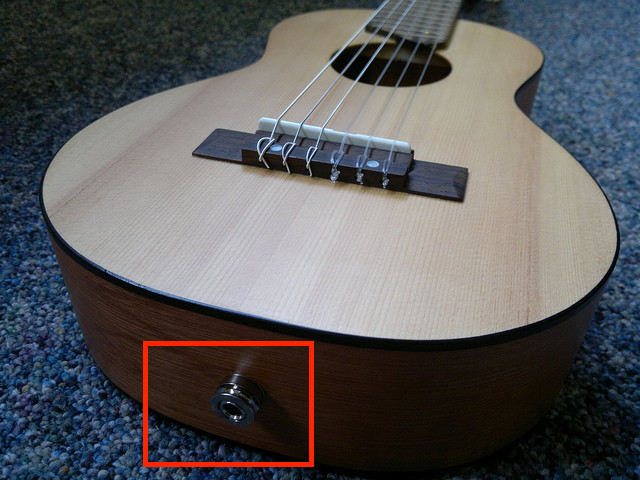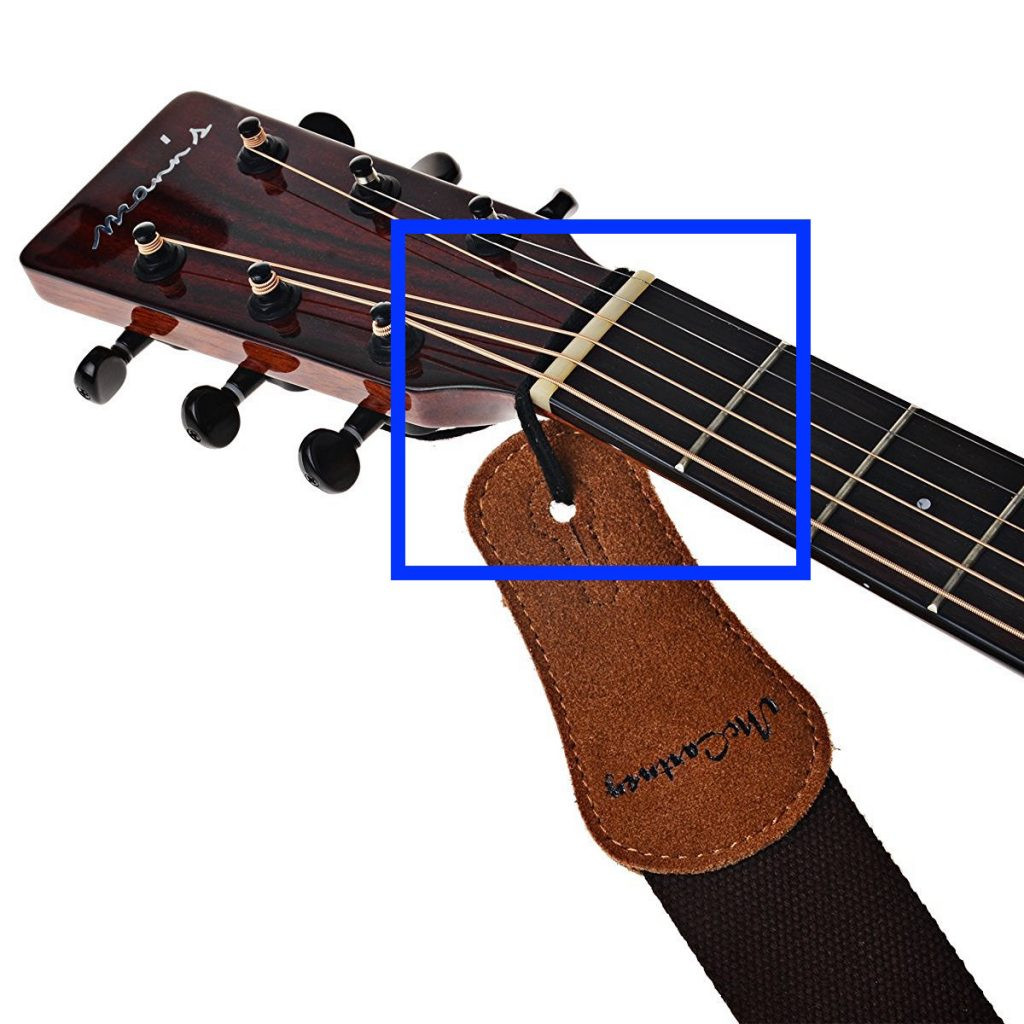Guitar straps are essential accessories for any guitar player who wants to stand and play, offering freedom of movement and expression. While seemingly simple, attaching a strap to your acoustic guitar correctly is crucial for comfort, security, and preventing accidental drops. This guide will walk you through the process step-by-step, ensuring you can confidently strap up and play.
Understanding Your Acoustic Guitar and Strap
Before diving into the attachment methods, let’s understand the components involved. Acoustic guitars typically have strap buttons or endpins at two key locations:
- Lower Bout (Endpin): This is almost always present on acoustic guitars, located at the bottom curve of the guitar body. It often doubles as the output jack if your guitar has electronics.
- Neck Heel or Upper Bout: The second strap button may be located at the heel of the neck (where the neck joins the body) or on the upper bout (the upper curve of the guitar body). Some acoustic guitars, especially traditional or classical models, might only have one button at the lower bout.
Guitar straps come in various materials, lengths, and designs, but the attachment ends are generally similar:
- Leather Ends (or Synthetic): These are the most common type, featuring reinforced holes designed to fit snugly over strap buttons.
Knowing your guitar’s button configuration is the first step to correctly attaching your strap.
Method 1: Using Two Strap Buttons
If your acoustic guitar has two strap buttons, this is the most straightforward and secure method.
-
Locate the Strap Buttons: Identify the two strap buttons on your guitar. One will be at the lower bout (endpin), and the other usually at the neck heel or upper bout.
-
Prepare Your Strap: Take your guitar strap and identify the two ends with buttonholes.
-
Attach to the Lower Bout Button: Take one end of your strap and, with a bit of pressure, work the buttonhole over the lower bout strap button. It should be a snug fit to ensure security. Newer straps might require some initial effort to attach.
 how-to-attach-a-guitar-strap
how-to-attach-a-guitar-strap -
Attach to the Neck Button: Take the other end of your strap and repeat the process, attaching it to the strap button at the neck heel or upper bout. Ensure it is also securely fastened.
-
Adjust the Strap Length: Most guitar straps are adjustable. Put the strap over your shoulder and adjust the length until the guitar sits comfortably at your desired playing position. Experiment with different lengths to find what feels most natural for you, whether you prefer the guitar higher or lower.
Method 2: Using One Strap Button and a String (or Strap Button Adapter)
Many traditional acoustic guitars only come with a single strap button at the lower bout. In this case, you’ll need to use an alternative method to secure the other end of the strap.
-
Prepare a String or Strap Button Adapter: You can use a sturdy string, a shoelace, or a specialized strap button adapter designed for this purpose. Leather or nylon strings are good choices as they are strong and won’t scratch your guitar.
-
Attach One End to the Lower Bout Button: Secure one end of your guitar strap to the lower bout button as described in Method 1.
-
Tie the Other End with String:
- Thread the string through the buttonhole of the free end of your guitar strap.
- Position the guitar so you can access the area just above the guitar’s nut (where the headstock meets the fretboard).
- Carefully thread the string underneath the guitar strings, above the nut. Be sure not to tie it over the strings as this will affect tuning and sound.
- Bring the two ends of the string together behind the headstock and tie them securely. Ensure the knot is tight and won’t easily come undone.
 string-to-attach-guitar-strap
string-to-attach-guitar-strap -
Consider a Strap Button Adapter: For a more convenient and potentially more secure solution than a string, consider using a strap button adapter. These adapters typically loop around the guitar neck (above the nut or under the headstock) and provide a secure loop to attach your strap’s end. They are often made of leather or nylon and are designed to not damage your guitar’s finish.
-
Adjust the Strap Length: Once both ends are secured, adjust the strap length to your preferred playing position.
Essential Tips for Using a Guitar Strap
-
Practice Standing Up: If you plan to perform standing, practice with your strap while standing up regularly. Playing standing can feel different than sitting, and getting used to the posture and guitar position is important for performance.
-
Test Your Strap’s Security: Before each playing session, especially if you are standing, give your strap a gentle tug at both attachment points to ensure it’s securely fastened. This simple check can prevent accidental drops.
-
Consider Locking Straps: For extra security, especially if you play valuable guitars or move around a lot on stage, consider using locking guitar straps. These straps have mechanisms that lock onto the strap buttons, making it virtually impossible for the strap to slip off accidentally. While they may be slightly more effort to attach and detach, the added security is worth it for many players.
-
Experiment with Strap Length: The ideal guitar strap length is a matter of personal preference. A common starting point is to adjust the strap so your guitar hangs around your belt buckle or belly button level. However, experiment with different lengths to find what allows you to play most comfortably and efficiently. You might find you prefer a slightly different length for acoustic versus electric guitar.
-
Have Spare Straps: It’s always wise to have a backup guitar strap, especially if you perform regularly. Straps can wear out, and having a spare ensures you’re never caught unprepared if a strap breaks or slips.
-
Explore Different Strap Materials and Styles: Guitar straps come in a wide variety of materials like leather, nylon, cotton, and neoprene, each offering different levels of comfort and style. Don’t be afraid to try different types to find what you like best. Your strap can also be an expression of your personal style!
Conclusion
Knowing how to properly put a strap on your acoustic guitar is fundamental for comfortable and confident playing, especially when standing. Whether your guitar has two strap buttons or just one, understanding these methods and incorporating the essential tips will ensure your guitar is secure, allowing you to focus on making music. So, strap up, stand tall, and enjoy playing your acoustic guitar with newfound freedom!
